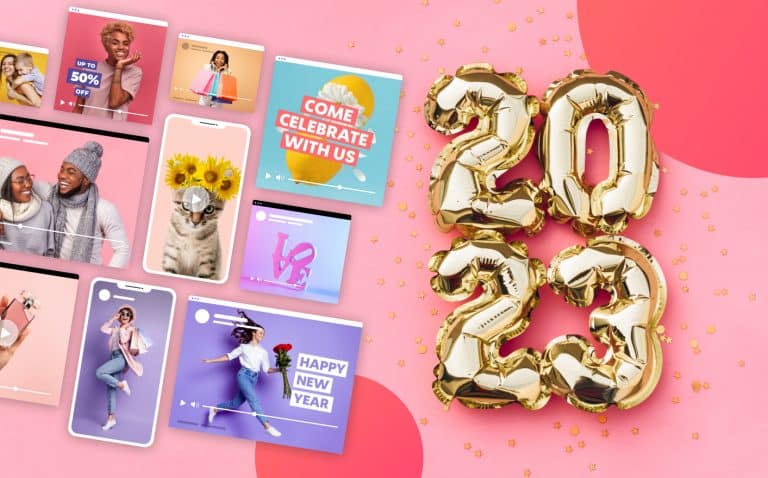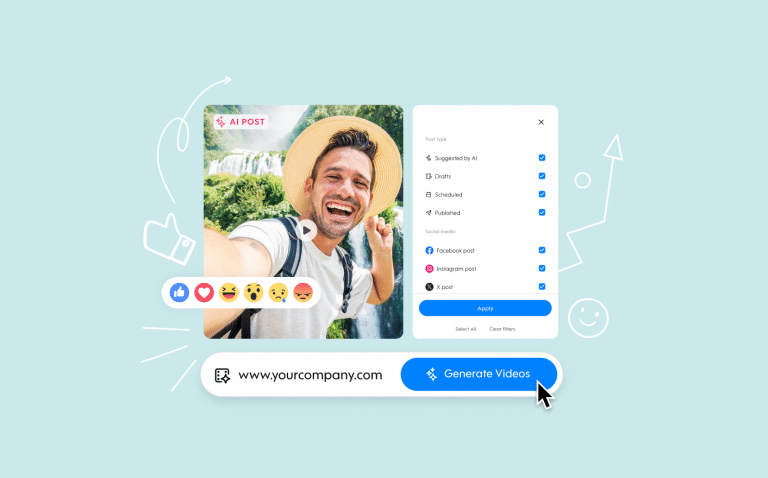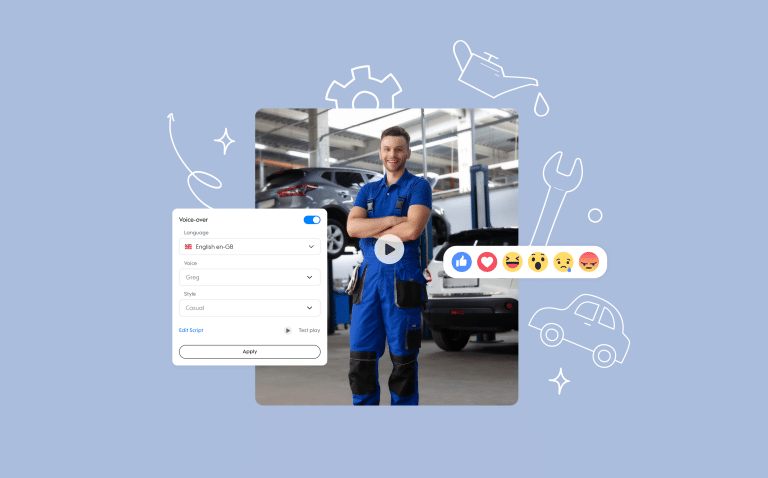
8 ideas for your fitness marketing strategy
The heart and soul of any fitness business is its community. That’s why so many business owners are left wondering what to do during this social distancing climate.
Well, as much as you miss your clients, they miss you too.
COVID-19 has impacted our mental well-being, our wallets, but also our fitness. Stay-at-home orders have left a huge gaping hole in the lives of those whose daily routine involved a nice healthy workout.
So whether you are simply limited by the regulations, running classes online, or have altogether closed your doors for the time being, right now is a great time to do two things:
- Let potential and existing clients know that you will still be there for them during and after this crisis. Stay active online, sharing motivational videos, helpful fitness tips, virtual classes, and online consultations.
- Take advantage of this time and work on your marketing strategy for the day after.
So many people are going to want to get back to the healthiest version of themselves once regulations are lifted, so why not at your gym? Your studio? Your personal or group training business?
You need fitness marketing ideas to tell your members about how you can help them, and you need to start implementing those ideas today.
There are tons of fitness marketing tactics out there you can find on blogs, Instagram posts, and YouTube videos, and those are great. What those tactical pieces are missing, however, is a holistic approach to fitness marketing strategy—a comprehensive approach that connects buyer motivation to action.
And that’s exactly what we’re going to do in this post.
What follows is a list of fitness marketing ideas, but it’s also a plan. While we have to make an extra effort during this time, this list doesn’t contain any ‘flavor-of-the-month’ trends—these are all time-tested promotional activities that work. We provide tips, insights, and resources for each one, and we know it can be a bit overwhelming, so here’s a piece of advice before you get started:
Now that most of us aren’t working in full capacity this is the ideal time to make this happen. Make an effort on every single one of these marketing ideas, and do them in the order they’re listed.
This list builds on itself, so if you skip down to a tactic that sounds good, you’re likely to miss out on the preceding strategy that supports it to help it work at optimal capacity.
Sound good?
Take a peek at the table of contents so you know what you’re getting yourself into, pour yourself a large cup of coffee, and let’s do this.
1. Google My Business
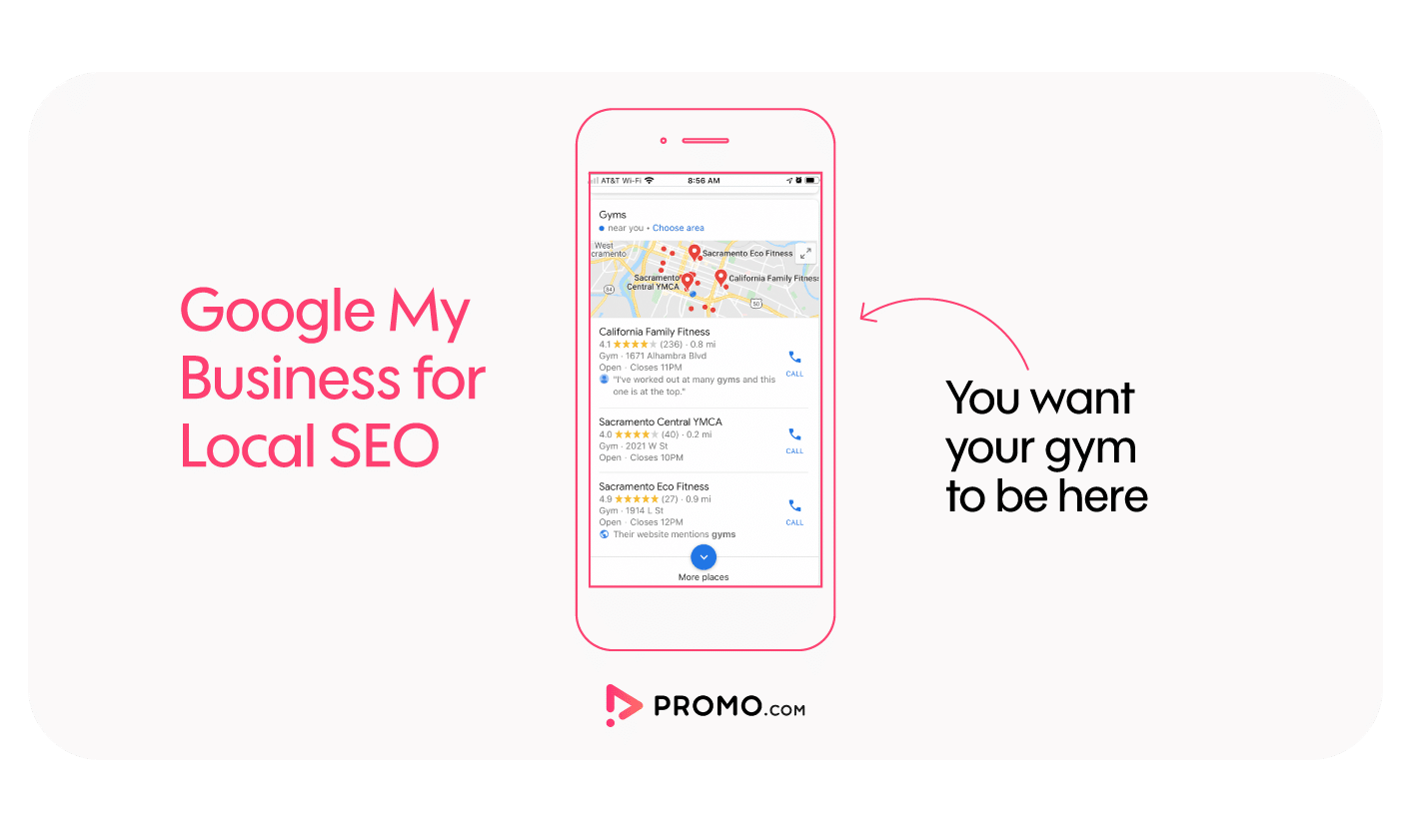
Google My Business (GMB) is a free service that’s designed to help with your local SEO.
Local SEO is different than regular ol’ SEO in that its goal is to get your business ranked on the Google Maps local pack—it is not designed to help your website rank higher, which is the job of traditional SEO, so forget about keywords for a minute.
There is a reason we listed optimizing your GMB profile first.
When somebody searches “gyms near me,” GMB is what controls that outcome. To be ranked in the top three results on the map—which is where you want to be—you need a large volume of high-quality reviews, but more importantly, you need a complete and accurate GMB listing, so that’s where you need to start.
Those local-intent searches are extremely valuable, as they’re more likely to result in foot traffic to your gym than searches like “how to do a deadlift.” And you can have them (for free!) with a properly optimized GMB profile.
You likely already have a GMB presence, but for many fitness professionals, they’re not managing them correctly.
Start at the beginning by visiting the Google My Business page and following the instructions to the letter. Make sure you’re signed into the Google account associated with your business.
Prioritize this task and follow it through until completion.
2. Develop customer personas
Let’s take a step back from tactics for a second.
Not all your members are the same, and more importantly, they have different motivations for why they patronize your establishment.
Somebody who is desperate to lose weight after this lockdown is very different from somebody who will view going to the gym as a much needed social outing. They still do the same things while they’re at the gym, but the reason they signed up is different.
If your marketing messages speak to their underlying motive, they’re more likely to take action—to claim that free trial, to make an appointment with a trainer, or to buy membership on the spot. But if you don’t understand your customer personas, you can’t design messaging that will attract them.
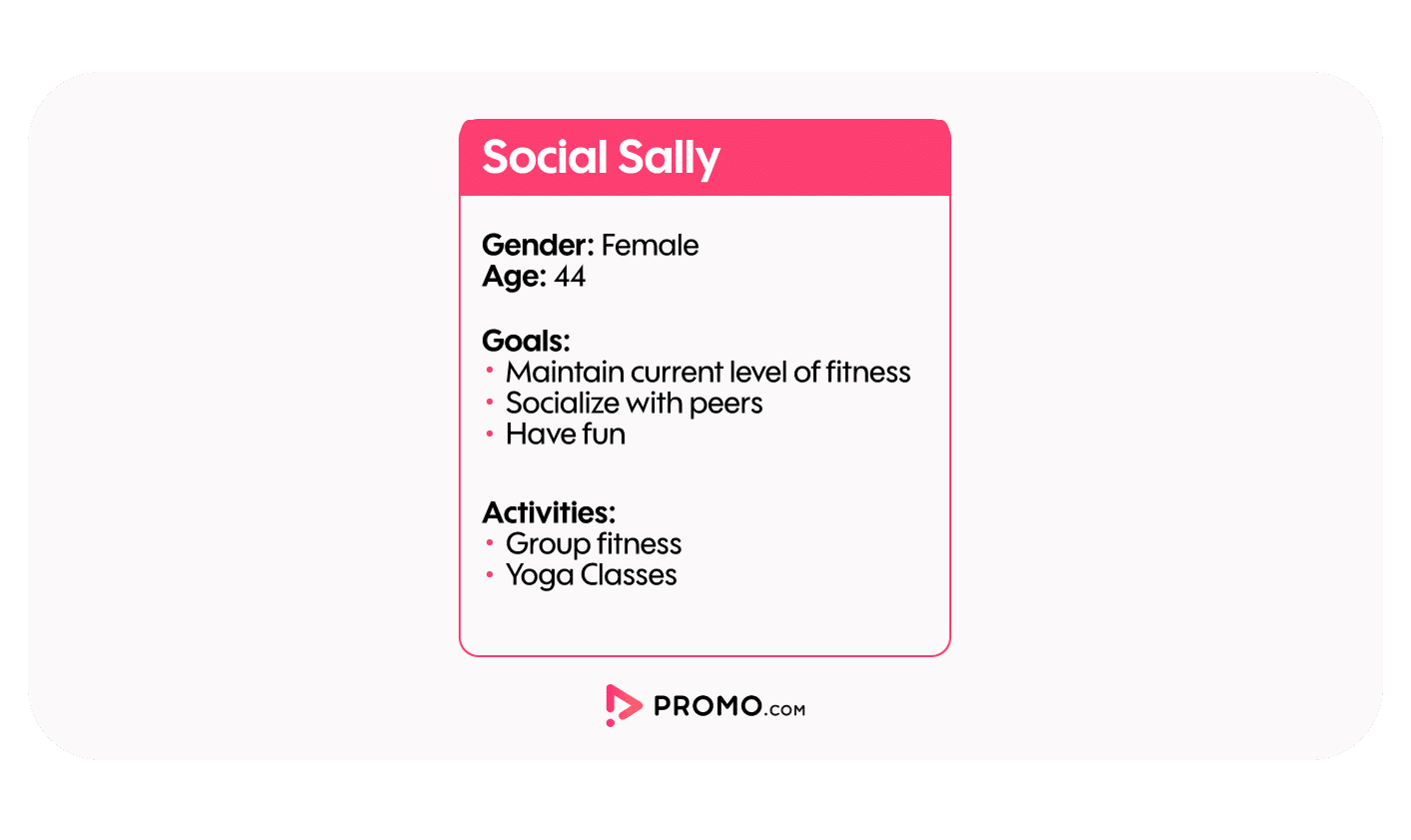
See why this is important?
If you do this step before you create promotions, videos, and Facebook ads, each one of those tactics will be more effective.
Here’s a great (free) persona worksheet you can download, print, and fill out with all the different personas who visit your gym or studio. Keep this printout handy as you go through the rest of these fitness marketing ideas.
3. Create a referral program
In virtually any business, referrals are your best friend. In fact, People are 4x more likely to buy when referred by a friend (Nielsen).
Anybody who’s been a member at your gym or studio for some time is likely a great candidate to refer somebody they know, but they don’t always do it—why?
Referrals are hit-or-miss for gym owners as a source for new business because they don’t have a dedicated referral program. If you want referrals, you must ask for them.
But it doesn’t have to be some sort of fancy, complicated, technology-enabled system. There are plenty of referral marketing software programs to choose from, but more important than the tool you use is the system you build.
For example, personal selling can be one of the most effective ways to get referrals, but you have to plan for it. If you’re a personal trainer, set a threshold for a loyal customer (such as 6 sessions) where you actively ask for the referral—bonus points if you hand them a card that clearly indicates the reward.
You’ll need to work out the incentives on both sides of the referral first—what deal does the newcomer get, and how do you reward the person that provided the referral? For a more in-depth analysis of how to create a referral program, bookmark this article from Zen Planner.
4. Create an events calendar
Now more than ever people need something to look forward to and this can include virtual events for now and IRL events down the line. Map out a full event calendar now to be prepared months ahead. Coordinate these events with both your internal activity (such as anniversaries) and external trends like New Year’s resolutions.

Events give you a great foundation for laying promotional activities like videos and ads on top while also creating anticipation for your members and prospects.
Speaking of promotions…
5. Establish an annual promotional schedule
The keyword here is “annual.” As we mentioned before, this is the time to use this downtime to plan ahead – both for you and your clients. Sit down and plan it all out while remembering to leave some leeway as possible, despite our wishful thinking we can’t know exactly what the future holds.
Generally speaking, your promotions should have at least six weeks between them, so no more than around eight per year. Look at your business statistics from the last year, take a peek at your calendar, and sketch out a rough map of your promotions for the entire year and stick to it.
As you’ll see when you to the advertising section in a few more paragraphs, you can still build audiences for these promos weeks before they actually happen to great effect.
6. Create videos
Videos, plural, as in ‘more than one.”
Especially now (but also later) – it’s important to keep your business alive and present online. And if you want to succeed in digital marketing, you need videos, but it’s not a one-size-fits-all.
We’re not talking about video fitness classes which are highly encouraged in this climate. We’re talking about marketing videos for now and in the future.
Adding videos to your marketing mix increases the effectiveness of almost everything you’ll do—advertising, social media, and even conversions on your website. Don’t think of video as an add-on to your marketing mix; treat it as the central component that everything stems from.
But what types of videos should you create?
The key thing to understand is that each video you make should have a singular goal, but that goal shouldn’t always be a sale. The reason for this is that most people don’t like to buy something on the first digital touch, so why try to sell to them at that point?
You’ll have much more success if you create videos for the three basic stages of the fitness buyer’s journey—awareness, consideration, and decision.
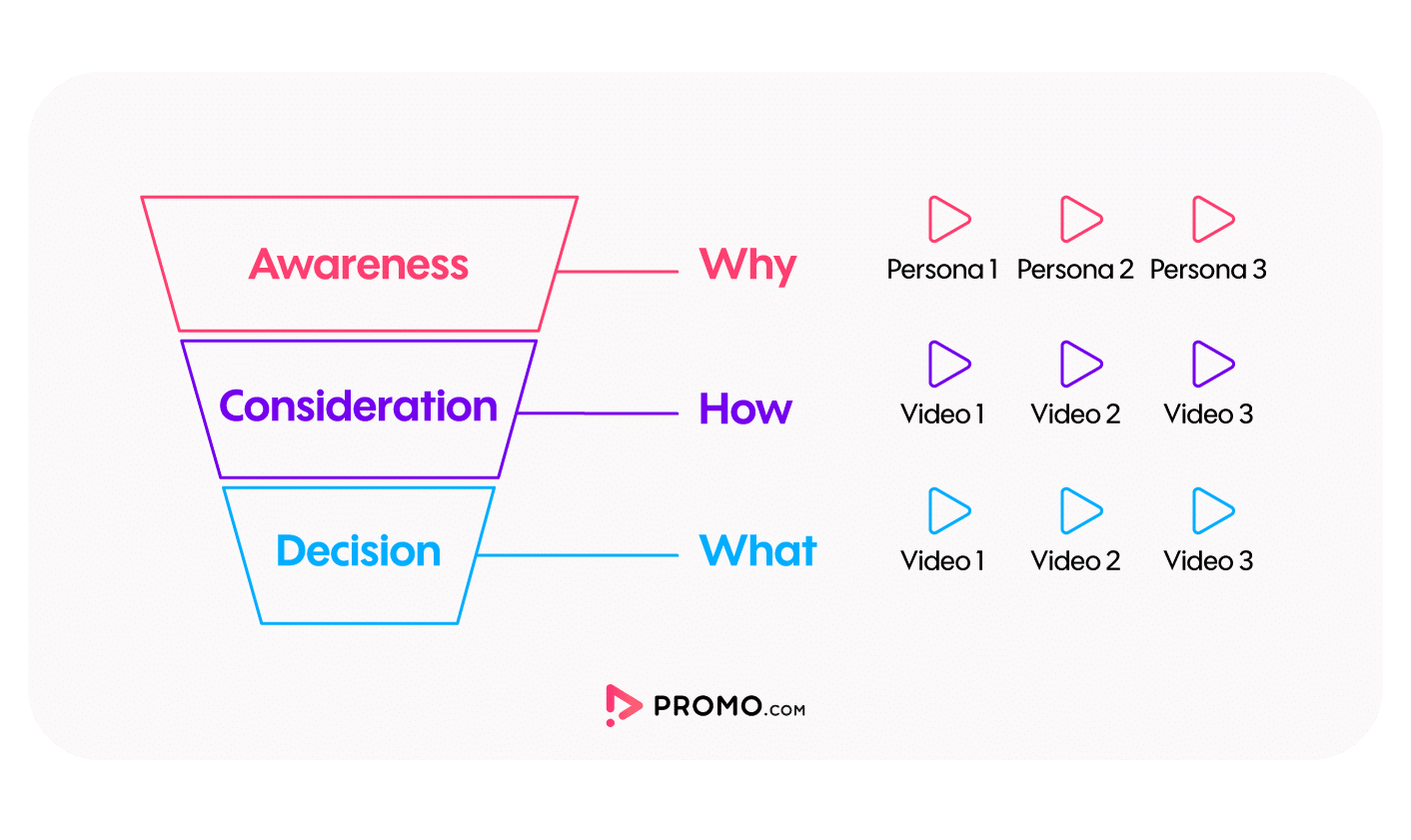
Let’s take a look at each of these stages of the funnel in detail.
Awareness
The awareness stage, also called the “top of the funnel,” is the introduction to your prospect. At this stage, the person doesn’t know you exist, hasn’t been to your website, etc.
This means that your brand means nothing to this person at the moment, they’re likely not ready to buy, so they don’t need information about decision-making items like how many squat racks you have or your price. Nope, the first thing you need to do at this stage is to grab their attention and give them your ‘Why.’
Why do you exist? Hopefully to serve your members, which is a great way to make a first impression.
Keep these videos short and have fun! Here are some examples from our fitness templates that you can customize to tell your story.
Consideration
Once you have their attention, you can start to talk about the things that make your fitness center unique—why you’re different and better than other ways they can lose weight, build strength, or get healthy.
Compare and contrast videos can work great here, as well as virtual tours of your space and programming.
Decision
NOW it’s time to talk about your deal, what they get when they join, etc.
You can time these up with your promotional calendar.
If you make several of each type of video, say 1 for each stage and 1 for each persona you have… You’ll be well on your way to highly effective video marketing. Keep reading to find out how to get the most views possible on your videos.
7. Social media
Many gyms and fitness studios are using social media wrong—there, we said it.
Social media, especially organic social media (we’ll get to ads in just a bit), is not really a sales and conversion-oriented place. If you’re counting on Facebook and Instagram posts for filling out your 8-week challenges and end-of-the-month sales, you might be in trouble.
So does social media work for fitness? Yes, but it’s more of a conversion assist.
Washing your car doesn’t make it go faster or save you gas money, but you still do it—why? Because it looks good, helps the paint last longer, and shows the world you actually care enough to keep your vehicle clean.
Use your social media channels to boost your reputation.
When somebody sees an ad for a promotion at your gym, one of the first things he or she is going to do is to browse through your social media channel to see what it’s actually like. When they do that for your gym, what will they see?
Will they see clean equipment, smiling staff members, and classes full of people having fun?
Or, will they see a wall of promotions and discounts?
If your social presence looks more like the second option, here are a few quick tips to enhance your social branding:
- Get your staff involved. Allow your trainers to do Instagram takeovers and show what their routines are like, even from home.
- Interview your members for off-the-cuff testimonials and success stories.
- Highlight specific areas of your space (if you’re able to get footage during this time.
One simple way to make sure your social presence doesn’t get too promotional is to follow the 4-1-1 rule of social media content:
Four posts about general fitness interests, one repost/retweet, and one self-serving post, such as a promotion. Rinse and repeat.
Now that you’ve got optimized social profiles that will help boost your conversion rates, let’s talk about lead generation with paid social ads.
8. Advertising on social media
Advertising your fitness center on social media can be a powerful tool for getting to new members, especially now that people are spending so much of their time at home browsing through their feeds.
Of course, this tactic works best once you have all the basics in place, hence why it’s listed at the end of this post.
For example—what should you write in your ad text? Think back to your personas, the #2 tip in this post… What are their challenges, their fears, and their motivations for getting fit? You already have all this info, so the ads can basically write themselves!
Next, take a look at your events calendar. Events are great assets to advertise because they are time-bound with a sense of urgency—use Facebook and Instagram to drive traffic to your RSVP page and gain interest early on, as well as create a sticky calendar reminder that will send emails and notifications to their Facebook profiles.
The same thing goes for your promotions calendar, but with a twist.
Remember the videos you created for each stage of the buyer’s journey for all the personas you came up with? Those videos will make great ads, and if you time them up with your promotional calendar you can get extraordinary results.
Here’s how it works:
Advertise to cold audiences
Create a Facebook audience for each persona you have. You can use demographics like age, gender, and zip code to narrow down your audience within the Facebook ads manager.
Once you’ve built your cold audience, send them your video ads at the awareness stage. These videos should be short, energetic, and not overly sales-y—remember, your goal here is to catch their attention and make a good first impression.
Retarget to warm audience
When you advertise a video on Facebook or Instagram, the Ads Manager actually records how many people watched the video and how long they watched. Using this data, you can create a retargeting audience of people who have watched 50% of your awareness-level videos.
Since these folks are more interested in your brand than the people that just scrolled past your videos, send them your next series of videos at the consideration and awareness phases and they’ll be much more likely to convert.
In order to pull off this type of social media advertising, you’ll need to know how to use some advanced features of the ads platform. In case you need to brush up on these, here are a few articles you can use to create winning social media ads:
- Revealed: The best practices for Facebook ads in 2020
- Instagram ads: The best practices for 2020
- YouTube ads best practices: 2020 and beyond
Follow these tips for paid social media advertising and you’ll be off to a great start generating leads for your membership.
Next steps
At this point, you should be well steeped in fitness marketing ideas and ready to make it happen.
While businesses everywhere are suffering right now, make sure you are well prepared for the day after with an end-to-end marketing strategy.
Promo.com offers tools to help you create stunning marketing videos for the fitness industry designed to attract attention, brand your business, and convert new members.
